Santa Marta, Colombia is a hidden gem that attracts travelers with its rich history, vibrant culture, and stunning natural beauty. Located on the Caribbean coast, 4 hours north of Cartagena, it is situated between the sparkling Caribbean Sea and the towering mountains of the Sierra Nevada de Santa Marta. It offers a unique blend of colonial charm and modern appeal, making it an ideal destination for both adventure seekers and those seeking relaxation. Although frequently visited, the city itself is not very interesting. However, its geographical location and accessibility make it a strategic destination.
A Bit of History
Santa Marta is the oldest city in Colombia, founded in 1525 by the Spanish conqueror Rodrigo de Bastidas.
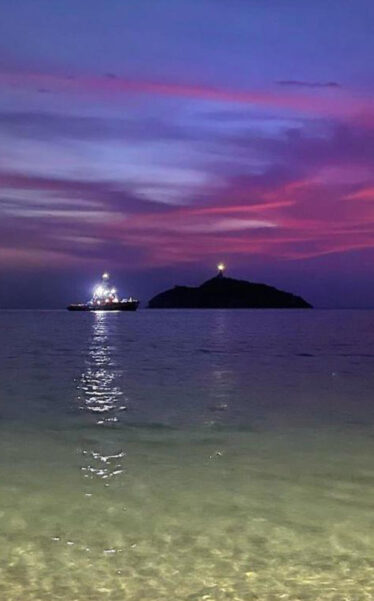
The city was named in honor of Saint Martha, to attract divine protection. The historical importance of Santa Marta is evident when walking its cobbled streets. The colonial architecture of the city, characterized by colorful facades and grand churches, tells the story of its past.
During the early years, the Spanish colonizers faced resistance from the Tairona indigenous people, who were organized into units that controlled different territories in the mountainous massif, from the Caribbean Sea to the peaks of Simón Bolívar and Aloglue (Cristóbal Colón peak), fiercely defending their lands.
The Taironas were an advanced civilization with an economy based on agriculture, fishing, and trade. They built complex cities with agricultural terraces, stone paths, and irrigation systems. The Lost City (Teyuna), located in the Sierra Nevada de Santa Marta, is one of the most impressive remnants of this culture.
Throughout the 16th century, Santa Marta became an important port for the trade of gold and other goods. However, it was also frequently attacked by pirates and privateers, hindering its economic and demographic development.
During the Latin American wars of independence, Santa Marta played a significant role.
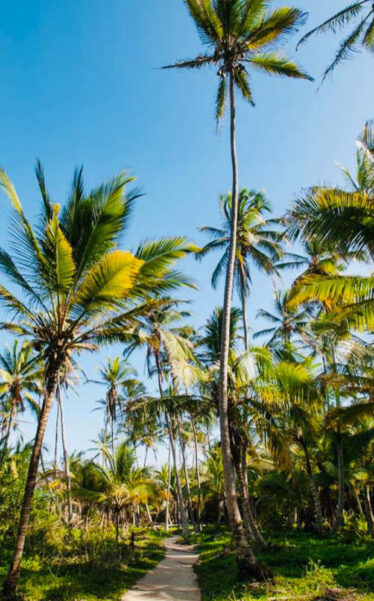
The city was the scene of battles and conflicts between the independence forces and the royalist troops. In 1820, Santa Marta was finally liberated from Spanish rule, becoming an integral part of Gran Colombia, Simón Bolívar’s dream of a united and free America from colonial rule.
Throughout the 19th and early 20th centuries, Santa Marta experienced significant economic development thanks to the boom in banana and coffee production and export. The city modernized with the construction of railways, ports, and other infrastructures that facilitated trade and urban growth.
However, this period was also marked by labor and social conflicts, particularly in the banana industry.
The Banana Massacre was a slaughter of workers of the American banana company United Fruit Company by the Colombian National Army. The aim was to protect the interests of the multinational United Fruit Company, under the command of Carlos Cortés Vargas.
Today, Santa Marta is a vibrant and multicultural city that attracts tourists from all over the world. Its economy is based on tourism, fishing, agriculture, and commerce. The city has managed to preserve its historical heritage while adapting to the demands of modernity.
Connection with Indigenous Culture
The connection with indigenous culture in Santa Marta is deep and ongoing, reflected in everyday life, traditions, and sustainable practices in the area. Here we explore in detail how this connection manifests.
The region of Santa Marta is home to several indigenous peoples, such as the Kogi, Arhuacos, Wiwa, and Kankuamos. These peoples keep their ancestral traditions and knowledge alive.
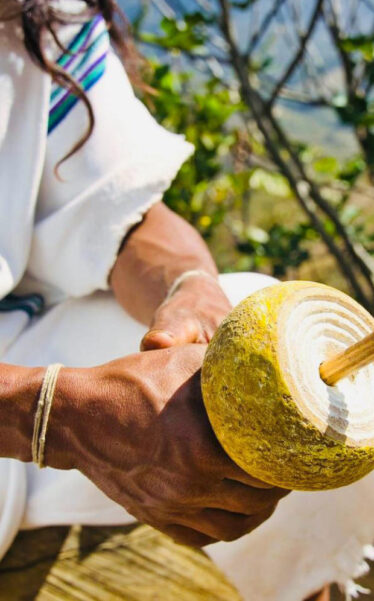
The Sierra Nevada de Santa Marta, the highest coastal mountain range in the world, is home to four important indigenous communities: the Kogi, Arhuacos, Wiwa, and Kankuamos. These communities consider the Sierra Nevada as the “heart of the world” and maintain a spiritual relationship and deep respect for nature.
The Kogi are known for their deeply spiritual culture and social organization based on the principles of balance and sustainability. The Mamos, spiritual leaders and guardians of ancestral wisdom, play a crucial role in preserving Kogi culture and traditions.
The Arhuacos, also known as Ika, are known for their distinctive traditional attire, which includes handwoven bags and white hats. Like the Kogi, the Arhuacos have a worldview centered on respect for nature and harmony with the environment.
The Wiwa, like the other peoples of the Sierra, have a rich oral and spiritual tradition. Their agricultural practices and community life reflect a deep knowledge and respect for the region’s biodiversity.
The Kankuamos have become more visible in recent years in their struggle for recognition of their rights and the preservation of their culture. They also share a strong spiritual connection with the Sierra Nevada.
Similarly, the city has begun to focus on sustainable and cultural tourism, offering visitors the opportunity to learn about and respect the indigenous culture of the region. Keeping this in mind, people can make different plans. Some of them are:
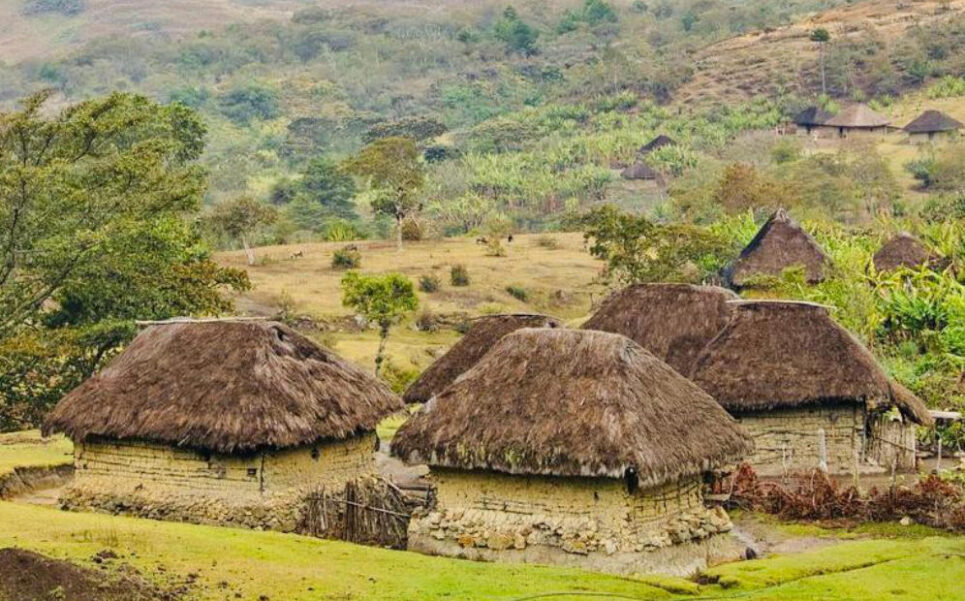
Trekking to the Lost City: This experience not only physically challenges visitors but also allows them to learn about the history and culture of the Taironas, ancestors of the current indigenous peoples. During the trek, indigenous guides share stories and knowledge about their ancestors and the spiritual significance of the place.
Indigenous Craftsmanship: This is an important expression of the culture and identity of the communities of the Sierra Nevada. Products like handwoven bags, hats, and necklaces are made by hand and sold in local markets and fair trade shops. These activities not only help preserve artisanal traditions but also provide a vital source of income for the communities.
Attending Indigenous Celebrations or Rituals: Celebrations and rituals are a fundamental part of indigenous life in Santa Marta. These activities not only have spiritual significance but also strengthen community bonds and cultural identity.
Pagamentos: These are offering rituals to Mother Earth performed by the Mamos and other spiritual leaders. These rituals aim to maintain balance and harmony in nature.
Festivities: The communities celebrate various festivals that mark important events in the agricultural and spiritual calendar, allowing visitors to participate and learn about their meanings and traditions.
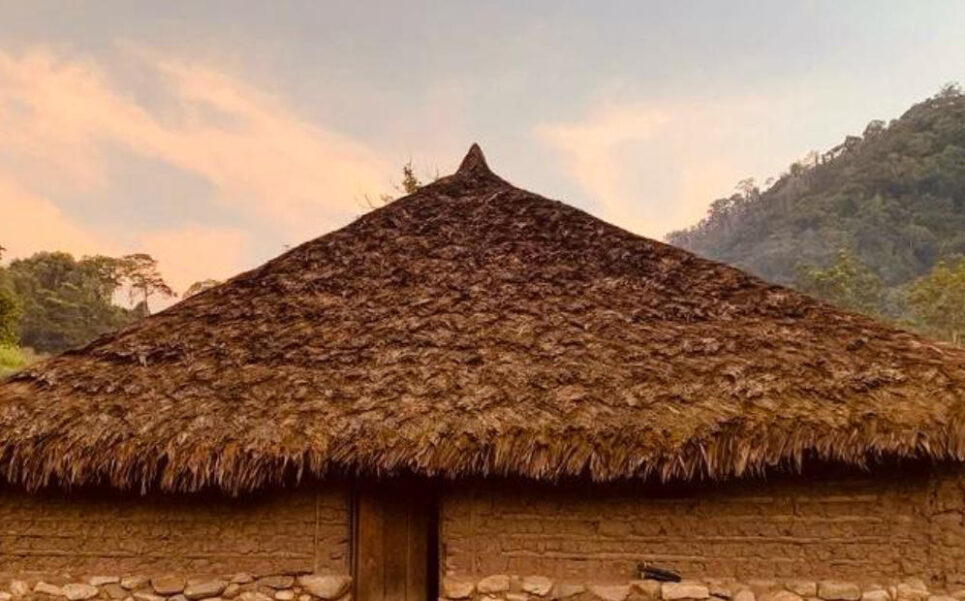
The connection with indigenous culture in Santa Marta is an integral aspect of the region’s identity. Through their continuous presence, contribution to sustainability, and struggles for recognition and cultural preservation, the indigenous communities of the Sierra Nevada de Santa Marta enrich the region’s life and offer visitors a unique opportunity to learn about and respect their cultural heritage. Visiting Santa Marta is not only an experience of natural beauty but also an immersion in the cultural and spiritual richness of its native inhabitants.
What to Do in Santa Marta?
The truth is that Santa Marta offers many activities. I believe the city offers beautiful landscapes. On the other hand, the city center is full of restaurants, bars, and attractions that are worth visiting.
Sit on a shaded bench and watch how the locals mingle in this recently remodeled park.
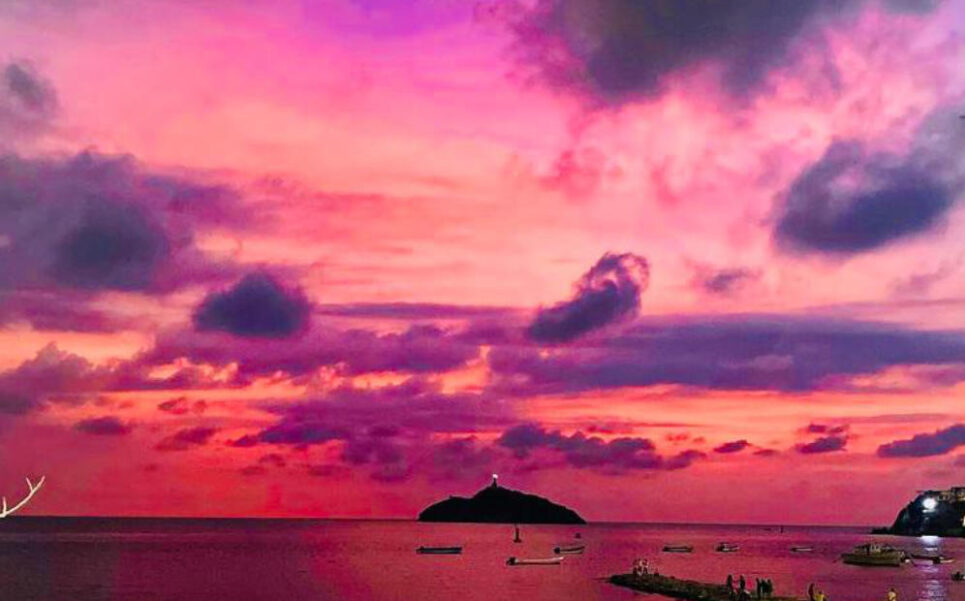
The sunset has a different glow in this city. Being on the boardwalk an hour before sunset allows you to enjoy the boats, public artworks, and the sun melting into the water.
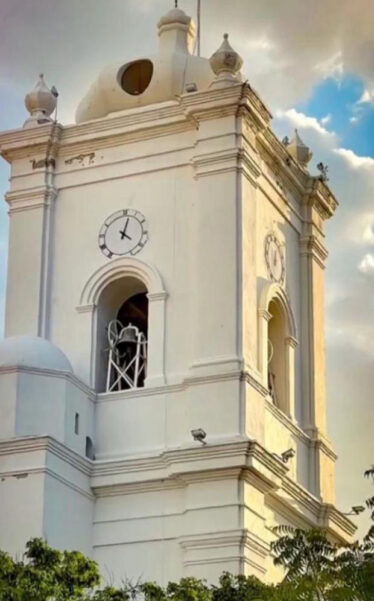
The Santa Marta Cathedral is undoubtedly one of the most recognized images and cherished heritage sites in this city. It is a beautiful church that the local residents of Santa Marta are proud to call their own.
The cathedral was built in 1531 and was the first church constructed on the continental Americas. For this reason, it is considered the Mother of Colombian churches. For many years, the remains of Simón Bolívar were housed in the church. However, in 1842, Venezuela reclaimed the remains.
Visiting the Cathedral of Santa Marta in Colombia is a journey through time, offering a glimpse into the rich history and cultural heritage of the region.
The cathedral’s architecture is a testament to the colonial era, characterized by its grandeur, simplicity, and solid construction.
Beyond its historical significance, the Cathedral of Santa Marta is also a cultural heritage site, representing the spiritual and artistic traditions of the Colombian people. Its ornate interior, adorned with religious artworks and sculptures, offers visitors a glimpse into the religious fervor and artistic expression of the colonial period.
La Quinta de San Pedro Alejandrino is almost a must-visit. It was the last residence of Simón Bolívar, the liberator of America. This historic site offers a fascinating insight into the final days of the national hero.
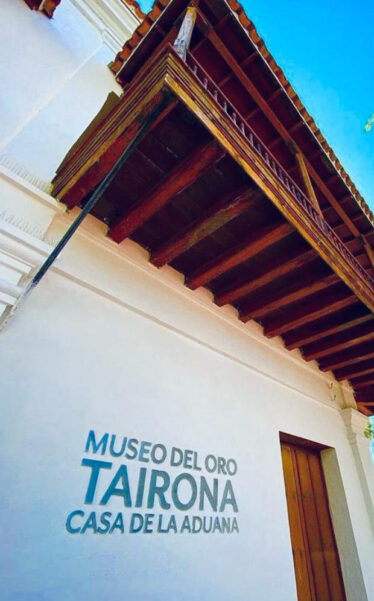
It is located 5 kilometers from downtown Santa Marta at the foot of the Sierra Nevada foothills. La Quinta de San Pedro Alejandrino was founded on February 2, 1608, by the canon of the Santa Marta Cathedral, Francisco de Godoy y Cortesía, under the name “La Florida San Pedro Alejandrino” in memory of the Spanish martyr Pedro Godoy (a Thomist theologian from the second half of the 17th century).
The Tairona Gold Museum is impressive. Located in the Cultural Center of the Bank of the Republic, this museum showcases an impressive collection of indigenous artifacts.
Visitors have the opportunity to admire a diverse array of gold objects, including figurines, jewelry, ceremonial ornaments, and religious artifacts, many of which date back over a thousand years.
The museum is a historical and cultural monument located on the north side of Bolívar Park in Santa Marta. It was inaugurated in 2014 to preserve the region’s cultural heritage.
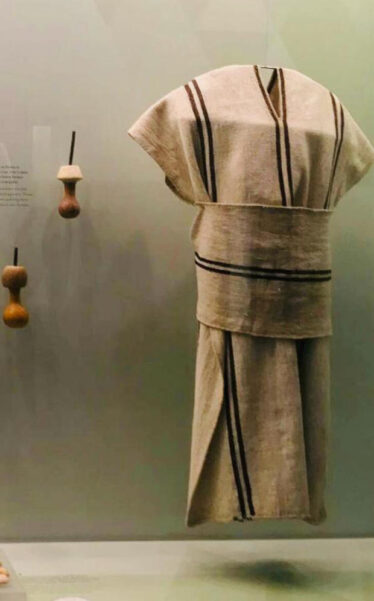
The museum plays a crucial role in safeguarding these precious artifacts for future generations and raising awareness about the rich cultural legacy of the region.
Another great plan is to visit the Parque de los Novios. It is the heart of the historic center and is always very lively, even after sunset. It is filled with bars and restaurants and has shaded areas that encourage locals and tourists to enjoy it at any time.
In the center of the square, you can see statues of important figures in Colombian society. These statues include Francisco de Paula Santander, a Colombian military and political figure, and Manuel Murillo Toro, who was twice president of the country in the 19th century.
As its name suggests, Parque de Los Novios is synonymous with romance and love. The park’s picturesque setting, with its leafy trees, colorful flowers, and inviting benches, creates a romantic ambiance that is perfect for couples looking to enjoy a leisurely stroll, share a quiet moment, or savor a romantic dinner at one of the nearby restaurants.
The park is a popular gathering spot for socializing, people-watching, and enjoying live music and entertainment, especially in the evenings when it comes alive with activity.
But if you want to make the most of what Santa Marta has to offer, you’ll want to venture out of the city itself. Santa Marta, which is the perfect base for exploring the Caribbean coast and the Sierra Nevada mountains, offers easy access to Parque Tayrona, Minca, or Palomino for a wide range of adventures, such as beach-hopping, diving, and hiking.
Dream Beaches
Santa Marta is known for its spectacular beaches, which are perfect for relaxing, swimming, diving, and enjoying the sun. Some of the most notable ones are:
Playa Blanca has crystal-clear waters and white sand, ideal for snorkeling and enjoying marine life.
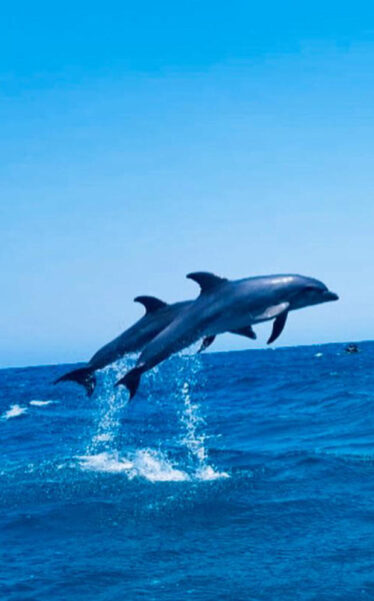
It is one of the most sought-after beaches in the Santa Marta area. It is close to Rodadero, a booming area for local tourism in Colombia. Playa Blanca itself is a long strip of sand directly adjacent to the Sierra Nevada. This creates a feeling of being ‘enclosed’ on the beach, as it is surrounded by cliffs on three sides, with the fourth side being the ocean.
Taganga is a small fishing village with a beach popular among backpackers and divers.
Taganga, the quiet fishing village east of Santa Marta, seems to attract more stray dogs than tourists. Amidst the dilapidated buildings and dirt roads, Taganga has its own charm with friendly people, a relaxed atmosphere, and the best sunsets!
Tayrona National Natural Park is home to some of the most beautiful beaches in Colombia, such as Bahía Concha, Playa Cristal, and Cabo San Juan.
Bahía Concha is a beautiful beach in Santa Marta located only about 45 minutes from downtown.
If you’re in Santa Marta and looking to enjoy a beautiful and peaceful beach to relax and disconnect from the outside world, we recommend visiting Bahía Concha beach.
Bahía Concha is one of the most visited beaches in Santa Marta, and the temperature of this beach is perfect for enjoying a delightful bath in its calm waters.
This beach is characterized by being surrounded by mountains, its white sand, and its crystal-clear waters. It is an extensive beach with spectacular landscapes.
Likewise, the city is a paradise for lovers of water sports and outdoor activities.
Taking a sea walk changes the world. You feel the peace that emanates from the ocean floor. This experience takes place at Inca Inca beach. Inca Inca beach is 10 minutes from Rodadero and is characterized by being a semi-private, tranquil beach with crystal-clear waters.
You can also dive or snorkel in Taganga and Tayrona Park. If you have no diving experience, these waters are perfect for it. Others can go kitesurfing on the windy beaches of the region.
Natural Treasures
If you’ve ever imagined walking on a beach with soft white sand, where turquoise waves reach your feet, giving you a sense of peace and tranquility, you’re in luck because that place is Tayrona National Natural Park.
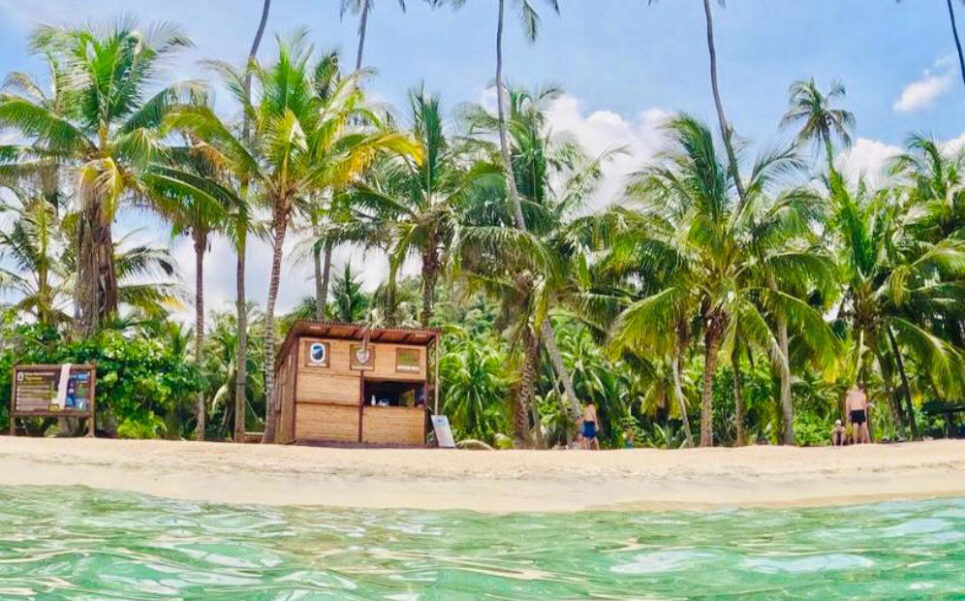
Tayrona National Park is a gem! This park is one of Colombia’s most important natural treasures. It offers a unique combination of tropical jungle, pristine beaches, and mountains.
Its habitat harbors a significant number of species that are dispersed in areas with different thermal floors ranging from sea level to heights of 900 meters. Of the 15,000 hectares that make up the park, 3,000 are marine area.
The Park is considered one of the most significant ecological reserves in South America, with great natural beauty and a rich flora and fauna. It contains pristine beaches, reefs, a splendid sea, the spectacular Sierra Nevada de Santa Marta, archaeological remains, waterfalls, streams, and much more.
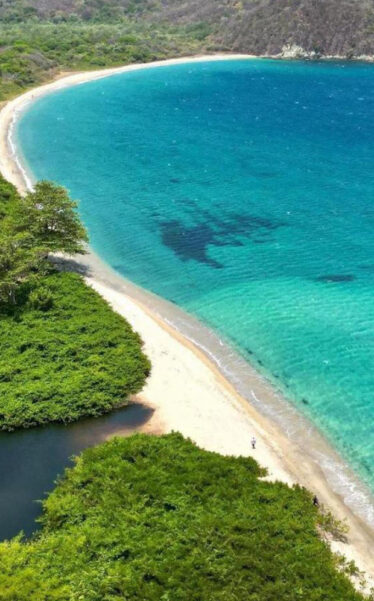
In the park, there are different activities to do, some of these plans can be:
** The Nudist Beach, while not officially a nudist beach, the name and conditions of the area have created the custom of nudity on this beach.
** Visit the Pueblito Chairama. Full of archaeological ruins of Tayrona settlers who occupied it over 500 years ago.
** Playa del Muerto, since 2010 it has been designated with the name “Playa Cristal”.
** Arrecifes sector, a zone with accommodation services, bathrooms, and a restaurant. The beach is not considered suitable for swimming due to the force of the waves.
** A visit to the Lost City, a trek located within the jungle, to discover some ruins hidden among the vegetation.
The Sierra Nevada de Santa Marta is the highest coastal mountain range in the world and a sacred place for local indigenous peoples. Its highest peak is Gonawindua, also called Pico Cristóbal Colón, which is also the highest mountain in Colombia.
In case you didn’t know, the Sierra Nevada is the second-highest coastal mountain system in the world after the Saint Elias Mountains between Canada and the United States and the highest in the world on a tropical coast. Therefore, it is said that in the Sierra, the best climatic summary of the world is found, where all thermal floors are found from the warm beaches of the Caribbean to the glaciers that still exist on the summit.
With an approximate area of 17,000 km², it is separated from the Andes mountain range by the valley system formed by the Cesar and Ranchería rivers.
The Sierra Nevada de Santa Marta is part of the Sierra Nevada de Santa Marta National Natural Park and the Tayrona National Natural Park, which are managed by the Ministry of the Environment. It is located approximately at 10°52′ North and 73°43′ West (position of its central peaks), distributed among the departments of Magdalena, La Guajira, and Cesar, in the Colombian Caribbean. This region is part of the PDET focused territories.
We would like to emphasize that it is perfect for ecotourism and adventure lovers.
An amazing plan is to trek to the Lost City (Teyuna). The lost city is an ancient Tayrona city believed to have been founded in 800 AD. This multi-day hike offers stunning views and a deep immersion in nature.
Being a mountain of more than 5000 meters high, it has several thermal floors, from warm and dry to perpetual snows. Likewise, the climate of the entire region is determined by the trade winds and by the elevation with respect to sea level.

Because of this, the temperature ranges from 30 °C at the lower part of the park to 0 °C at the highest peaks of the Sierra.
As if that weren’t enough, UNESCO declared it a Biosphere Reserve in 1979, given the network of ecosystems that harbor countless forms of life and are home to several indigenous communities.
The Food
The heart of Santa Marta is its bustling downtown, where modern cafes, restaurants, and shops blend with historical sites.
Samarian cuisine is a fusion of indigenous, African, and Spanish traditions, which has evolved over centuries to offer a variety of unique and delicious flavors.
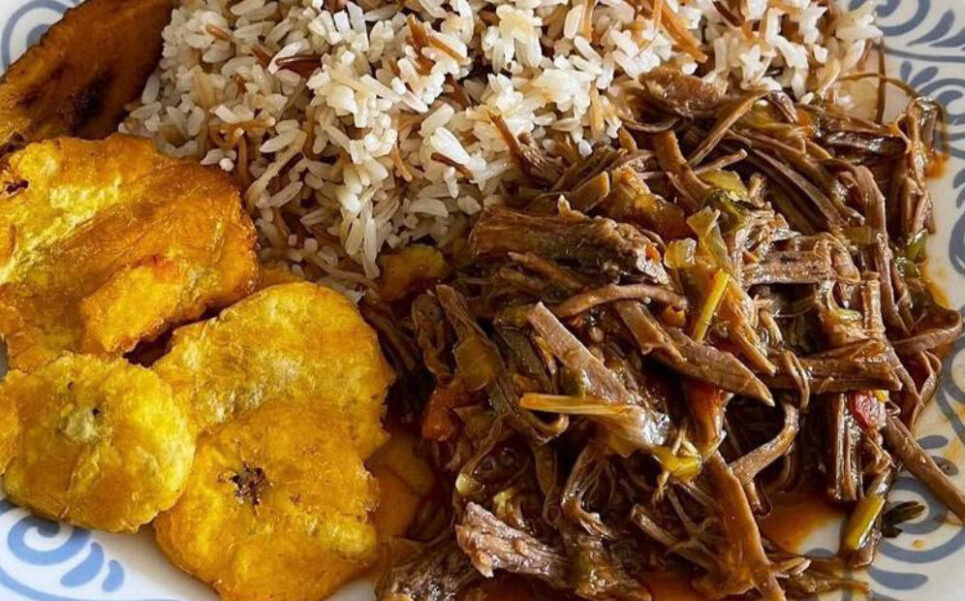
Santa Marta’s cuisine is characterized by the use of fresh and local ingredients, many of which come directly from the sea and the fertile land of the region. Some of the most common ingredients include:
Fish and Seafood: As a coastal city, Santa Marta has access to an abundant variety of fresh fish and seafood, such as snapper, sawfish, shrimp, and crab.
Coconut: Used in many preparations, coconut adds a distinctive flavor to Caribbean dishes.
Plantain: Both green and ripe, plantain is a versatile ingredient used in a variety of dishes.
Cassava: A staple tuber in the local diet.
Rice: Often cooked with coconut or as a side dish to main courses.
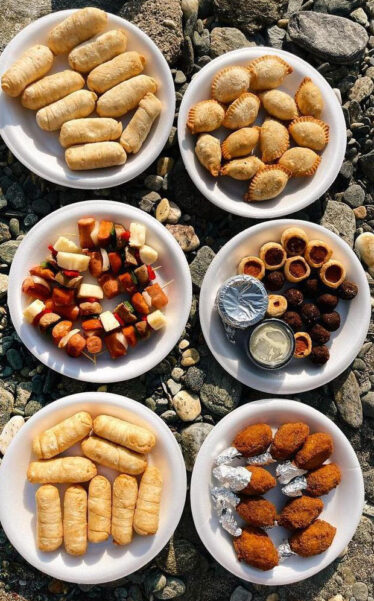
Some of the typical dishes are:
Seafood stew is one of Santa Marta’s most emblematic dishes. A rich and delicious soup made with a variety of fresh seafood. It is often served with white rice and patacones (fried plantains).
Arepas de huevo. Although originally from the Caribbean region, the egg arepa is a staple in Santa Marta. This arepa is filled with an egg and fried until golden and crispy. It can be enjoyed alone or with a variety of sauces.
Coconut rice is a popular side dish served with many seafood and fish dishes. The rice is cooked in coconut milk, giving it a sweet and creamy flavor, often complemented with raisins for an additional touch of sweetness.
Fried snapper is a simple but delicious dish, where fresh fish is fried whole until crispy on the outside and juicy on the inside. It is served with coconut rice, salad, and patacones. This dish is a perfect example of the freshness of the sea and the simplicity of Caribbean cuisine.
Carimañolas are stuffed cassavas, typically with ground meat or cheese, which are then fried until golden and crispy. They are a popular breakfast or snack in the region.
It is important to highlight that there are also typical drinks.
Coconut lemonade is a refreshing and delicious drink, coconut lemonade is perfect for hot days in Santa Marta. It is prepared by mixing fresh lemon juice, coconut milk, and sugar, often served with plenty of ice.
Corn chicha is a traditional fermented drink made from corn, water, and panela (unrefined cane sugar). It has a slightly sweet flavor and is a sample of the indigenous roots of the region.
Santa Marta’s gastronomy reflects the rich cultural diversity of the region. Indigenous influence is evident in the use of local ingredients and traditional preparation methods, such as cooking in bijao leaves. African heritage is manifested in the use of spices and frying techniques, while Spanish influence can be seen in the incorporation of ingredients such as rice and the use of sauces and stews.
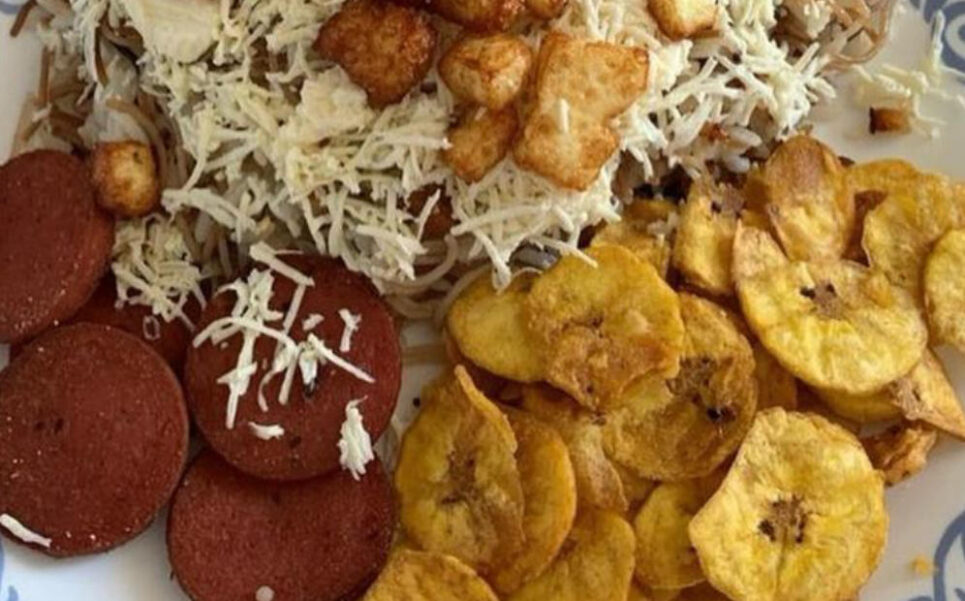
Visiting local markets, such as the Santa Marta Public Market, is an excellent way to discover the fresh and local ingredients that form the basis of Samarian cuisine. Here you can find exotic fruits, fresh fish, and a variety of spices and local products.
Santa Marta’s gastronomy is a feast for the senses, combining fresh flavors from the sea with local ingredients from the land. From fried fish and fresh seafood to traditional sweets and refreshing drinks, each dish tells a story of the region’s rich cultural and natural heritage. Traveling to Santa Marta is not only an opportunity to enjoy its natural beauty and history but also to indulge in vibrant and delicious cuisine that captures the essence of the Colombian Caribbean.
Cultural Activities
It should be noted that the coastal city offers a variety of cultural activities.
Let’s start with Holy Week. During this week, the city is filled with liturgical activities and processions commemorating the Passion, Death, and Resurrection of Jesus Christ.
The processions, organized by various brotherhoods and parishes, traverse the streets of Santa Marta’s historic downtown. The faithful participate in masses, stations of the cross, and other religious activities, demonstrating their devotion and faith. The Basilica Cathedral of Santa Marta and other churches in the city are the main venues for these solemn celebrations.
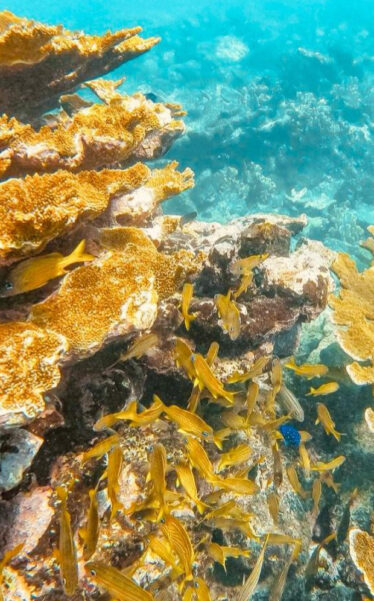
The Feast of San Juan is a traditional celebration that takes place on June 24th in honor of Saint John the Baptist. In Santa Marta, this festival is celebrated with music, dance, and typical foods. Neighborhoods are filled with joy with community parties, and it is common to see residents dressed in colorful costumes participating in events and activities in honor of the saint.
The Carnival of Mamatoco is another significant cultural event in Santa Marta, especially in the neighborhood of Mamatoco. This carnival is celebrated in February, coinciding with the carnival season in other parts of Colombia, such as the famous Barranquilla Carnival.
The carnival includes parades of groups, dance troupes, live music, and colorful costumes. The groups, formed by groups of neighbors, compete in creativity and originality, offering a spectacle full of joy and tradition. This event is an excellent opportunity to experience local culture and enjoy Samarian hospitality.
The International Caribbean Theater Festival is a prestigious cultural event held in Santa Marta. This festival brings together theater companies from around the world to present their works in various venues throughout the city, including theaters, parks, and public squares.
The festival not only provides a platform for performing arts but also includes workshops, conferences, and encounters between artists and the public. It is an excellent opportunity to enjoy high-quality theatrical productions and for local and international artists to exchange experiences and knowledge.
The Beer Festival in Santa Marta is a celebration that brings together beer lovers and good music. Usually held in October, the festival features the participation of local, national, and international breweries offering a wide variety of craft beers.
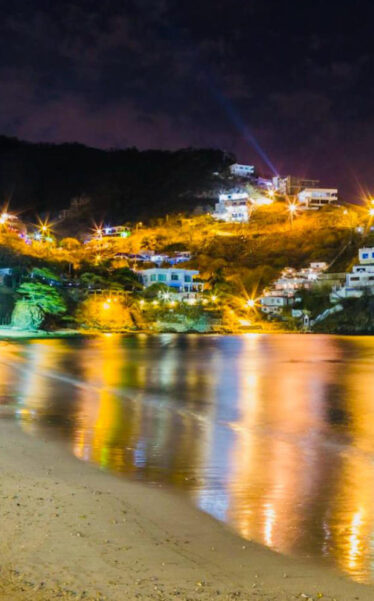
The event includes beer tastings, competitions for the best craft beer, live music, and a variety of gastronomic options. It’s a perfect occasion to enjoy Santa Marta’s vibrant nightlife and taste unique beers in a festive atmosphere.
The Caribbean Music Festival is a celebration of the musical richness of the region. This event, held in various venues throughout the city, brings together local and international musicians performing genres such as cumbia, vallenato, porro, and reggae.
The festival not only offers concerts but also workshops and master classes where attendees can learn about the history and technique of these musical genres. It is an immersive experience that highlights the cultural diversity of the Colombian Caribbean.
Santa Marta is a city that breathes culture and tradition. Its festivals and cultural activities not only celebrate its rich historical heritage but also promote art, music, and community. From the Festivities of the Sea to the Carnival of Mamatoco, passing through theater and music festivals, each event offers a unique opportunity to immerse oneself in the vibrant culture of Santa Marta. For any visitor, participating in these festivities is an unforgettable way to get to know and enjoy the essence of Santa Marta.
Conclusion
Traveling to Santa Marta with family is an enriching experience that combines fun, learning, and adventure. From exploring pristine beaches to immersing oneself in local history and culture, this Caribbean city offers countless opportunities to create unforgettable memories. With its warm hospitality and welcoming atmosphere, Santa Marta is the perfect destination for a family vacation full of discovery and fun.
Visiting Santa Marta is an experience that combines the best of history, culture, nature, and adventure. Whether you’re looking to relax on paradisiacal beaches, explore ancient archaeological sites, enjoy rich local cuisine, or venture into the jungle and mountains.
Santa Marta has something to offer every type of traveler. This Caribbean city will not only captivate you with its natural beauty but also provide you with a rich and diverse cultural experience, making it a must-visit destination in Colombia. Get ready to discover and fall in love with Santa Marta!


